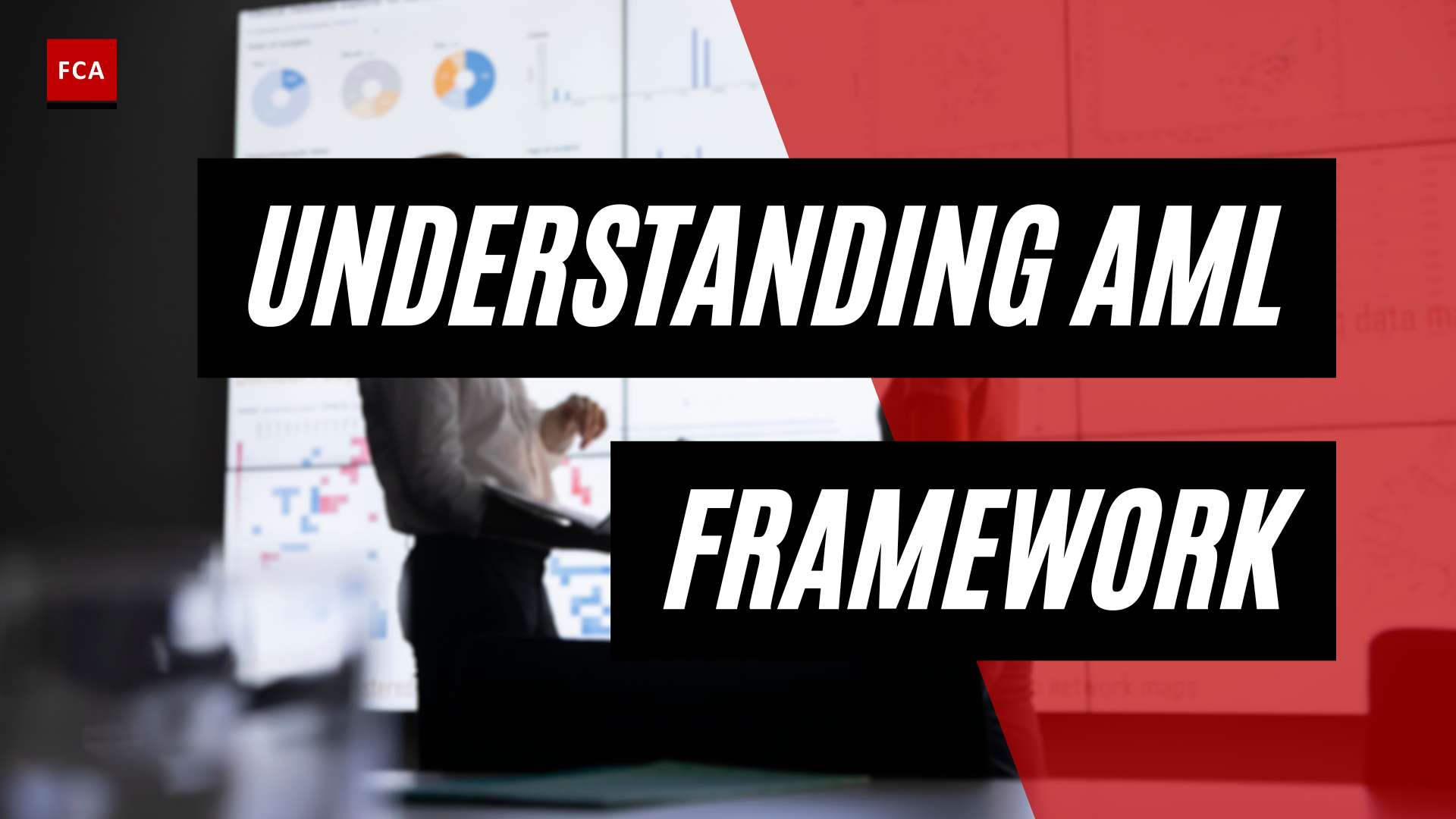AML Legal Challenges and Case Law
In the world of anti-money laundering (AML) compliance, legal challenges and case law play a significant role in shaping the framework and enforcement of AML regulations. Understanding the legal landscape is crucial for organizations to navigate potential pitfalls and ensure compliance with AML requirements. This section provides an overview of the AML compliance framework, the impact of non-compliance, and the consequences of AML violations.
Overview of AML Compliance Framework
The AML compliance framework consists of regulations, guidelines, and procedures that financial institutions (FIs) must adhere to in order to detect and prevent money laundering and other illicit financial activities. AML regulations vary across jurisdictions, but they share a common goal of safeguarding the integrity of the financial system and preventing the misuse of funds for criminal purposes.
To comply with AML regulations, FIs are required to implement robust AML programs that include measures such as customer due diligence (CDD), transaction monitoring, and reporting suspicious activities. These programs are designed to identify and mitigate the risks associated with money laundering and terrorist financing.
Impact of AML Non-Compliance
Non-compliance with AML regulations can have far-reaching consequences for financial institutions. The impact of AML non-compliance can be both financial and reputational. Financially, organizations that violate AML regulations are subject to civil and criminal penalties, ranging from simple fines to jail time. Additionally, sanctions can be imposed, which bar FIs from doing business with certain individuals or entities (Unit21 Blog).
Reputationally, non-compliance with AML regulations can lead to a loss of public trust and damage the brand image of the institution. This can result in a loss of customers and business opportunities. The negative impact on reputation can be long-lasting and difficult to recover from.
Consequences of AML Violations
The consequences of AML violations can be severe. AML penalties and fines vary depending on the jurisdiction and the nature of the violation. In the United States, for example, penalties under the Bank Secrecy Act (BSA) can include fines of up to $250,000, imprisonment for up to five years, or both. The USA PATRIOT Act introduced even stricter measures, with violations resulting in fines of $1 million or double the value of the transaction, whichever is greater (Unit21 Blog). The Office of Foreign Assets Control (OFAC) is responsible for administering and enforcing U.S. sanctions, and violations of AML sanctions regulations can result in fines of up to $20 million and imprisonment for up to 30 years (Unit21 Blog).
In the European Union, the 6th EU Anti-Money Laundering Directive (6AMLD) introduced stricter AML penalties, with the minimum penalty for crimes related to money laundering increasing from one to four years in prison, and economic sanctions increasing to €5 million.
AML violations can also result in legal challenges and enforcement actions by regulators. Financial institutions may face legal consequences, including fines and penalties, for deficiencies in their AML programs. Successful legal challenges against AML programs have been brought under the U.S. Bank Secrecy Act and its implementing regulations, leading to enforcement actions by federal bank regulators. These cases highlight the importance of effective AML compliance and the need for financial institutions to continuously strengthen their AML controls and practices.
By understanding the AML compliance framework, the consequences of non-compliance, and the potential legal challenges, organizations can build and maintain effective AML compliance programs. Compliance professionals must stay updated on evolving AML regulations and case law to ensure their institutions are protected and able to meet their legal obligations.
AML Penalties and Fines
Ensuring compliance with anti-money laundering (AML) regulations is of utmost importance for financial institutions. Failure to comply with these regulations can result in severe penalties and fines. In this section, we will explore the AML penalties and sanctions in the United States, European Union, and provide case studies highlighting AML legal challenges.
U.S. AML Penalties and Sanctions
In the United States, financial organizations that violate AML regulations are subject to civil and criminal penalties, ranging from simple fines to jail time. Sanctions can also be imposed, which bars financial institutions from doing business with certain individuals or entities.
Under the Bank Secrecy Act (BSA) of 1970, which is the most significant U.S. law in fighting and preventing money laundering, AML penalties can include fines of up to $250,000, imprisonment for up to five years, or both (Unit21 Blog). The USA PATRIOT Act, introduced in response to the 9/11 attacks, imposes compliance obligations on U.S. financial institutions to combat money laundering and terrorism financing. Violations of the USA PATRIOT Act can result in fines of $1 million or double the value of the transaction, whichever is greater. Moreover, the Office of Foreign Assets Control (OFAC) is responsible for administering and enforcing U.S. sanctions. Violations of AML sanctions regulations can result in fines of up to $20 million and imprisonment for up to 30 years (Unit21 Blog).
European AML Penalties
In the European Union (EU), the 6th EU Anti-Money Laundering Directive (6AMLD) introduced stricter AML penalties. The minimum penalty for crimes related to money laundering increased from one to four years in prison, and economic sanctions increased to €5 million. Each EU member state may impose additional penalties and fines based on their national laws and regulations.
Case Studies: AML Legal Challenges
Several notable case studies highlight the legal challenges faced by financial institutions regarding AML compliance. For instance, the 2015 BNP Paribas case demonstrated the willingness of U.S. authorities to impose substantial fines on foreign financial institutions for AML violations. HSBC’s AML compliance issues in 2012 led to a $1.9 billion settlement and a five-year deferred prosecution agreement, emphasizing the severe consequences of non-compliance with AML regulations (Harvard University).
Legal challenges to AML programs have resulted in significant consequences and financial penalties for financial institutions and regulators worldwide. In the United States, individuals have brought successful legal challenges against AML programs under the U.S. Bank Secrecy Act and its implementing regulations. Federal bank regulators have also taken action against financial institutions for AML deficiencies (ScienceDirect). Similar challenges have occurred in various countries, including Malaysia, Sweden, Denmark, and Germany, where regulators have faced legal challenges over the adequacy of their AML supervisory practices (ScienceDirect).
These case studies underscore the importance of effective AML compliance and enforcement mechanisms. Financial institutions must remain vigilant in implementing robust AML programs to mitigate the risk of legal challenges and ensure the integrity of the global financial system.
Evolving AML Regulatory Landscape
As the global financial landscape continues to evolve, so does the regulatory landscape surrounding Anti-Money Laundering (AML) compliance. Financial institutions face various challenges in AML detection and prevention, while also experiencing increasing scrutiny on their AML compliance programs. Understanding these challenges and the global legal regimes governing AML compliance is crucial for institutions to navigate the complex landscape effectively.
Challenges in AML Detection and Prevention
Money laundering efforts are becoming increasingly sophisticated, posing challenges to AML regulators in detecting and preventing illegal financial activities. Criminals employ innovative techniques to disguise the origins of illicit funds, making it essential for financial institutions to enhance their detection capabilities. The use of advanced technologies, such as artificial intelligence and machine learning, is becoming more prevalent in AML systems to improve detection accuracy and efficiency.
One of the significant challenges faced by financial institutions is the sheer volume of financial transactions that need to be monitored. Implementing robust transaction monitoring systems and data analytics tools is essential to identify suspicious patterns and activities that may indicate money laundering. Additionally, collaboration and information sharing between financial institutions and regulatory authorities play a crucial role in combating money laundering on a global scale.
Increasing Scrutiny on AML Compliance Programs
In recent years, there has been a notable increase in scrutiny on the adequacy of AML compliance programs. Regulators are examining the effectiveness of these programs in detecting and preventing money laundering activities. Financial institutions must ensure that their AML compliance programs are comprehensive, well-documented, and regularly updated to meet evolving regulatory requirements.
Regulators in various countries, including Sweden, Denmark, and Germany, have taken enforcement actions against banks for AML program deficiencies, while also facing challenges in court over the adequacy of their AML supervisory practices. This emphasizes the importance of robust AML controls and practices within financial institutions to withstand regulatory scrutiny.
Global Legal Regimes and AML Compliance
The global interconnectedness of financial systems increases the risk of money laundering and other financial crimes. Governments worldwide have implemented AML regulations to combat these illicit activities. Non-compliance with AML regulations can result in significant fines, penalties, and reputational damage for financial institutions.
Understanding the legal regimes governing AML compliance is crucial for financial institutions operating across borders. Each jurisdiction has its own AML regulations and requirements. For example, the United States has implemented the Bank Secrecy Act and its implementing regulations, while the European Union has the Fifth Anti-Money Laundering Directive (5AMLD) and other relevant directives.
Financial institutions must navigate these complex legal frameworks by implementing effective AML compliance programs that align with the specific requirements of each jurisdiction. This includes tailoring AML programs to the company’s risks, implementing robust Know Your Customer (KYC) procedures, conducting transaction monitoring, and ensuring timely reporting of suspicious activities.
By staying informed about the evolving AML regulatory landscape, financial institutions can effectively adapt their compliance programs, enhance their detection and prevention capabilities, and mitigate legal challenges. Implementing comprehensive AML compliance programs not only helps institutions meet their legal obligations but also safeguards against money laundering and contributes to the detection of illicit activities.
Building an Effective AML Compliance Program
To navigate the complex landscape of anti-money laundering (AML) regulations and mitigate AML legal challenges, companies must establish a robust and tailored AML compliance program. This section will explore key components necessary for building an effective program, including tailoring AML programs to company risks, implementing Know Your Customer (KYC) procedures, and conducting transaction monitoring and reporting.
Tailoring AML Programs to Company Risks
Developing an AML compliance program tailored to the specific risks and needs of the company is crucial to protect companies from AML fines and penalties. Companies should conduct regular risk assessments to identify and mitigate the specific risks related to money laundering and other illegal financial activities. By understanding the unique vulnerabilities and threats they face, companies can tailor their AML programs accordingly, implementing effective controls and procedures to address those risks.
Procedimientos de Conozca a su Cliente (KYC)
Implementing robust KYC procedures is an essential aspect of any effective AML compliance program. KYC procedures involve verifying customer identities and assessing their risk profiles to ensure companies are not unwittingly facilitating illegal financial activities. By conducting thorough due diligence on customers and understanding their backgrounds, businesses can better detect and prevent money laundering or other illicit activities. KYC procedures may include verifying customer identities, conducting ongoing monitoring, and periodically updating customer information (Sanction Scanner).
Monitoreo e informes de transacciones
Monitoring customer transactions is a critical component of an effective AML compliance program. By actively monitoring transactions, companies can detect patterns, unusual activities, or suspicious transactions that may indicate potential money laundering or criminal activities. Transaction monitoring should be complemented by robust reporting mechanisms, ensuring that suspicious activities are promptly reported to the appropriate authorities. Effective transaction monitoring and reporting systems help companies fulfill their regulatory obligations and contribute to a safer financial environment.
Building an effective AML compliance program requires a proactive and risk-based approach. By tailoring AML programs to company risks, implementing robust KYC procedures, and establishing comprehensive transaction monitoring and reporting systems, companies can enhance their ability to detect and prevent money laundering and other illicit financial activities. These measures contribute to safeguarding against AML violations and play a vital role in protecting the integrity of the financial system, as well as ensuring compliance with global AML regulations and penalties.
International AML Regulations and Penalties
To effectively combat money laundering, countries around the world have established Anti-Money Laundering (AML) regulations and implemented penalties for non-compliance. In this section, we will examine AML regulations in the United States, the United Kingdom, and the European Union.
Regulaciones AML en los Estados Unidos
The United States has a comprehensive AML legal framework that focuses on preventing money laundering and terrorist financing. The Bank Secrecy Act (BSA) of 1970 is the cornerstone of AML regulations in the U.S. financial system. It imposes compliance obligations on financial institutions to report suspicious activities and maintain robust AML programs.
Under the BSA, financial institutions are required to establish and maintain effective AML programs. Violations of the BSA can result in significant penalties, including fines of up to $250,000, imprisonment for up to five years, or both. Additionally, the USA PATRIOT Act introduced measures to target financial crime associated with money laundering and terrorism financing, imposing severe penalties for non-compliance, such as fines of $1 million or double the value of the transaction, whichever is greater (Unit21 Blog).
AML Regulations in the United Kingdom
In the United Kingdom, AML regulations are enforced to deter money laundering and terrorist financing activities. The Money Laundering Regulations 2017 serve as the primary legislation governing AML compliance in the UK. These regulations require businesses, including financial institutions, to implement risk-based policies, procedures, and controls to prevent money laundering and terrorist financing.
The 2017 Regulations introduced various risk factors that determine the level of customer due diligence (CDD) measures required. Simplified CDD may be allowed if the institution determines that the relationship presents a low risk of money laundering or terrorist financing, while enhanced CDD is required in higher-risk situations.
Normativa AML en la Unión Europea
The European Union (EU) has implemented several directives to harmonize AML regulations across its member states. The 5th EU Anti-Money Laundering Directive (5AMLD) and the 6th EU Anti-Money Laundering Directive (6AMLD) are the latest directives that enhance AML compliance requirements.
The 6AMLD has introduced stricter AML penalties across the EU. It increased the minimum penalty for crimes related to money laundering from one to four years in prison and raised economic sanctions to €5 million (Unit21 Blog). These directives emphasize the importance of robust AML programs and cooperation between EU member states to combat money laundering and terrorist financing.
Understanding and complying with AML regulations in the United States, the United Kingdom, and the European Union is crucial for financial institutions and businesses to safeguard against money laundering and ensure compliance with legal requirements. By establishing effective AML programs, organizations can contribute to the global fight against illicit activities and protect the integrity of the financial system.
Canada’s AML Regime and Challenges
When it comes to combating money laundering and terrorist financing, Canada has implemented an AML/ATF (Anti-Money Laundering/Anti-Terrorist Financing) regime to protect its financial system. Sin embargo, como cualquier marco de lucha contra el blanqueo de capitales, existen desafíos continuos que deben abordarse. En esta sección, revisaremos el régimen ALD/ATF de Canadá, discutiremos las amenazas de lavado de dinero que enfrenta el país y exploraremos los esfuerzos que se están realizando para mejorar el régimen.
Examen del régimen de lucha contra el blanqueo de capitales y la financiación del terrorismo de Canadá
Exámenes recientes del régimen ALD/ATF del Canadá han determinado que, en general, es eficaz en su objetivo de prevenir el blanqueo de dinero y la financiación del terrorismo. Sin embargo, estos exámenes también han identificado áreas de mejora. Algunas de las áreas clave que requieren atención incluyen:
- Debilidades en el intercambio de información
- Bajos niveles de condenas por blanqueo de capitales y financiación del terrorismo
- Bajos niveles de recuperación del producto del delito
- Lagunas legislativas y reglamentarias, como la cobertura de la profesión jurídica y las cuestiones relativas a la transparencia de los beneficiarios reales
Se están realizando esfuerzos para subsanar estas deficiencias y fortalecer el régimen a fin de garantizar su eficacia continua en la lucha contra los delitos financieros.
Amenazas de lavado de dinero en Canadá
La Evaluación Nacional de Riesgos Inherentes (NIRA, por sus siglas en inglés) de Canadá ha puesto de relieve las principales amenazas de blanqueo de capitales a las que se enfrenta el país. La evaluación ha concluido que los grupos de delincuencia organizada transnacional y los blanqueadores de dinero profesionales son los principales actores involucrados en las actividades de blanqueo de dinero. Los mayores riesgos de lavado de dinero en Canadá están asociados con el tráfico ilícito de drogas, varios tipos de fraude y lavado de dinero de terceros.
Mejora del régimen ALD/ATF de Canadá
Para abordar las brechas y debilidades identificadas en el régimen ALD/ATF, Canadá ha desarrollado una estrategia para el período 2023-2026. Esta estrategia tiene por objeto mejorar la eficacia del régimen en la prevención, detección y desarticulación de las actividades de blanqueo de capitales y financiación del terrorismo. Las principales áreas de enfoque de la estrategia incluyen:
- Aumento de la eficacia operativa
- Abordar las lagunas legislativas y reglamentarias
- Mejora de la gobernanza y la coordinación del régimen
- Contribución a los esfuerzos internacionales para combatir el blanqueo de capitales y la financiación del terrorismo
Con la aplicación de esta estrategia, el Canadá pretende reforzar su régimen de lucha contra el blanqueo de capitales y la financiación del terrorismo y alinearlo con las normas internacionales y las mejores prácticas.
Es importante que Canadá evalúe y mejore continuamente su régimen ALD/ATF para mantenerse a la vanguardia de la evolución de las amenazas de lavado de dinero. Al abordar los desafíos identificados, fortalecer el intercambio de información, mejorar las tasas de condena y cerrar las brechas legislativas, Canadá puede salvaguardar eficazmente su sistema financiero y contribuir a la lucha mundial contra el lavado de dinero y el financiamiento del terrorismo.
Para obtener más información sobre el cumplimiento de AML y las mejores prácticas, considere explorar el software de cumplimiento de AML, la capacitación sobre cumplimiento de AML y las regulaciones de cumplimiento de AML.
The Importance of AML Compliance
Garantizar el cumplimiento de las regulaciones contra el lavado de dinero (AML) es de suma importancia para las instituciones y organizaciones financieras de todo el mundo. El creciente enfoque en el cumplimiento de AML está impulsado por la necesidad de protegerse contra el lavado de dinero y detectar actividades ilícitas. Exploremos las razones clave por las que el cumplimiento de AML es crucial.
Aumento de las multas y sanciones contra el blanqueo de capitales
Las organizaciones financieras que no cumplan con las regulaciones AML pueden enfrentar graves consecuencias. Las infracciones pueden dar lugar a sanciones civiles y penales, como multas, encarcelamiento o ambas. Por ejemplo, en los Estados Unidos, la Ley de Secreto Bancario (BSA, por sus siglas en inglés) impone obligaciones de cumplimiento a las instituciones financieras y las infracciones pueden dar lugar a multas de hasta 250.000 dólares, penas de prisión de hasta cinco años, o ambas. La Ley Patriota de EE.UU. introdujo medidas para combatir el blanqueo de capitales y la financiación del terrorismo, y las infracciones de esta ley pueden dar lugar a multas de 1 millón de dólares o al doble del valor de la transacción, lo que sea mayor (Unit21 Blog). En la Unión Europea, la 6ª Directiva de la UE contra el blanqueo de capitales (6AMLD) introdujo penas más estrictas, incluido un mínimo de cuatro años de prisión por delitos de blanqueo de capitales y aumentó las sanciones económicas a 5 millones de euros. El incumplimiento de la normativa AML también puede provocar daños a la reputación y pérdida de confianza de los clientes y las partes interesadas.
Safeguarding Against Money Laundering
El lavado de dinero es una preocupación importante a nivel mundial, ya que implica hacer que los activos obtenidos ilícitamente parezcan legítimos. Un sólido programa de cumplimiento de AML actúa como salvaguarda, evitando la inyección de fondos ilícitos en la economía. Al adherirse a las regulaciones AML, las instituciones financieras contribuyen a la integridad del sistema financiero y ayudan a proteger contra actividades delictivas como el tráfico de drogas, el financiamiento del terrorismo y el fraude (fuente).
Role of AML Regulations in Detecting Illicit Activities
AML regulations play a crucial role in detecting and preventing illicit activities within the financial system. These regulations require financial institutions to implement comprehensive AML programs, including Know Your Customer (KYC) procedures and transaction monitoring. By conducting due diligence on customers and monitoring transactions for suspicious activities, financial institutions can identify and report potential money laundering and other illicit activities to the appropriate authorities. This helps in maintaining the integrity of the financial system and contributes to the global fight against financial crimes.
By emphasizing the importance of AML compliance, financial institutions can mitigate the risk of non-compliance, which can result in significant fines, penalties, and reputational damage. Implementing effective AML programs, training employees on AML compliance, and staying updated with evolving AML regulations and best practices are essential steps to ensure compliance and maintain trust in the financial industry.
To learn more about AML compliance and related topics, explore our articles on AML compliance software, AML compliance training, and AML compliance regulations.









